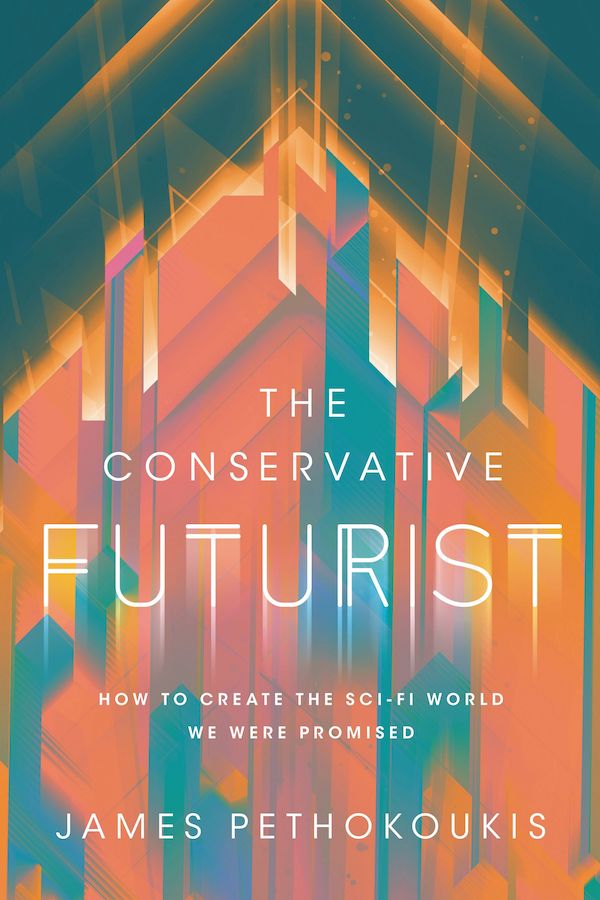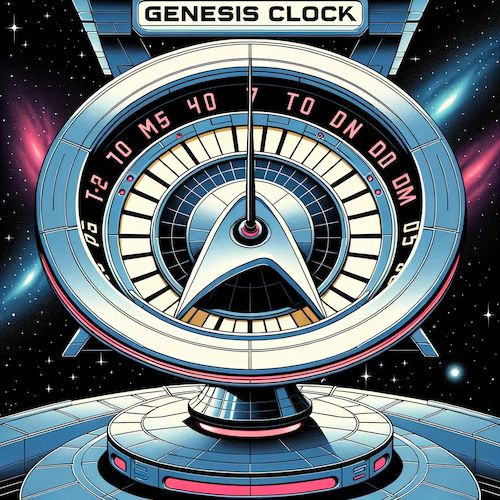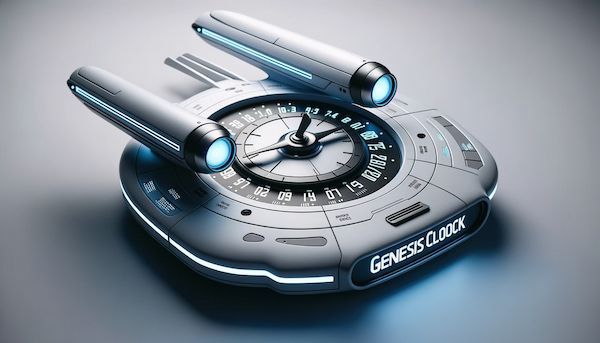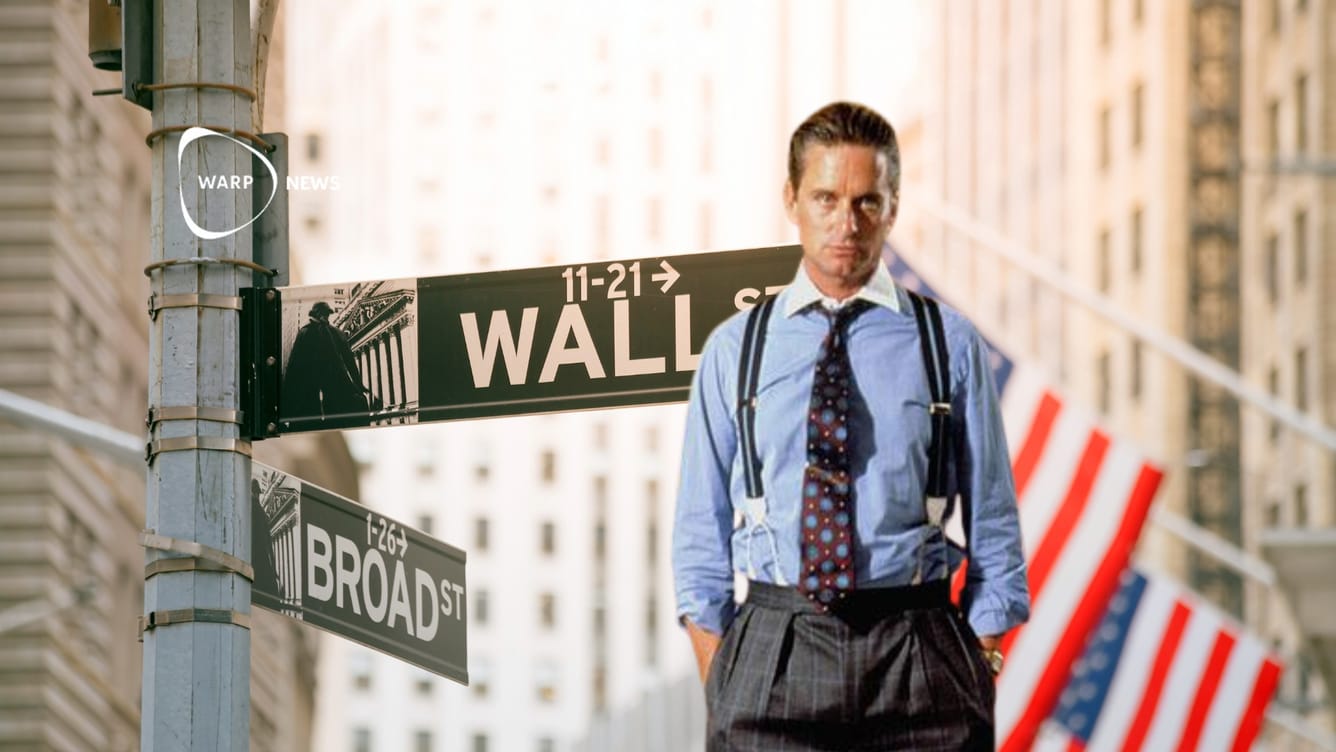
🕰️ Counting the Minutes and Seconds to a Sci-Fi Future
Vi borde skapa en Genesisklocka, för att motverka Domedagsklockan, och räkna minuterna och sekunderna vi har kvar till gryningen, skriver den konservative futuristen, James Pethokoukis.
Dela artikeln
Det här ett utdrag från The Conservative Futurist – How to Create the Sci-Fi World We Were Promised by James Pethokoukis. Du kan köpa boken på Bokus och Adlibris, eller direkt från förlaget.
As of the writing of this book, the famous Doomsday Clock of the Bulletin of the Atomic Scientists is at mere one hundred seconds to midnight, “the most dangerous situation that humanity has ever faced.” This analysis, while taking into account the nuclear issues that led to the clock’s creation, also factors in myriad other risks such as climate change and “disruptive” technologies like AI, cyberattacks, and genetic editing. Interestingly, the clock has been stuck at the time since 2020 when it was moved closer from two minutes to midnight. That, even with Russia’s invasion of Ukraine and loose suggestions from the former about using nuclear weapons. But with the clock already just shy of midnight, perhaps the Bulletin is hesitant to move it any closer. Then again, let’s not overthink things here.

Although the clock is a powerfully evocative symbol, it doesn’t really tell us much of substance. During the 1960s, for example, the clock suggested that the decade became existentially safer with the hands moving from two minutes to midnight at the start to ten minutes at the end. The Bulletin made those adjustments based mostly on the signing of various international nuclear weapons treaties. Yet we now know the decade was filled with nuclear close calls, including during the Cuban Missile Crisis, when a Soviet patrol submarine almost launched a nuclear-armed torpedo.
But the Doomsday Clock isn’t the only conceptual chronometer here. There’s also the Clock of the Long Now, an actual mechanical clock meant to run for ten thousand years—if it ever gets built and installed on the top of Mount Washington in Nevada. While the Doomsday Clock is meant to warn of approaching disaster, the Long Now Clock would offer perspective.
“Such a clock, if sufficiently impressive and well-engineered, would embody deep time for people,” explains Stewart Brand, a founding board member of the Long Now Foundation. “It should be charismatic to visit, interesting to think about, and famous enough to become iconic in the public discourse. Ideally, it would do for thinking about time what the photographs of Earth from space have done for thinking about the environment. Such icons reframe the way people think.”
Let me suggest a new clock, one that would be an evocative symbol like the Doomsday Clock, but also offer perspective more like the Long Now Clock. I call it the Genesis Clock. The name is inspired by the Genesis Device from 1982’s Star Trek: The Wrath of Khan. (Yes, more Trek.) When initiated on an uninhabited planet, the device would begin a process of rapid terraforming, preparing the planet for human colonization.

As one character in the film puts it, “What exactly is Genesis? Well, put simply, Genesis is life from lifelessness.” The Genesis Clock would attempt to tell humanity how close or distant it might be to a period so different from modern life that it would qualify as a new beginning for our civilization, a new human epoch. “New life,” one might even say.
As I explained above, the Doomsday Clock is pretty subjective in how it determines how close we’re to destroying ourselves. Might the Genesis Clock suffer the same problem as it suggests how close we were to the dawn of a new age rather than the midnight of our existence? To some degree, but the factors driving the time setting would be more objective.
Among the possible factors that would determine how close we are to dawn:
- How close are we to achieving artificial general intelligence?
- How close are we to extending the average human lifespan to 120?
- Do we have a cancer vaccine and a cure for Alzheimer’s?
- Can we deflect a larger asteroid or comet headed toward Earth?
- Is carbon in the atmosphere declining?
- Is less than 1 percent of the world’s population undernourished with a caloric intake below minimum energy requirements?
- Are we bringing back extinct species?
- Is even the poorest nation no poorer than the average economy in 2000?
- Is even the least free nation as free as the average nation in 2000?
- Is average Technologically Futuristic Productivity growth among rich nations at least 50 percent higher than its postwar average?
- Do we have sustainable off-planet human outputs that could continue with no help from Earth?
- Are we a true multiplanetary civilization?

How close are we to dawn? Probably a lot closer than many people think, especially those who believe we’re running out of resources on Earth, headed toward overpopulation, and must abandon our “fantasies of infinite economic growth.”
When the Doomsday Clock was started, it was set at seven minutes to midnight. Given recent technological advances and the growing awareness of the need for more progress — not to mention the existence of this book! — I would also start the Genesis Clock at seven minutes to dawn.
James Pethokoukis
He is a senior fellow and the DeWitt Wallace Chair at the American Enterprise Institute
Utdrag från The Conservative Futurist av James Pethokoukis. (Copyright 2023) Med tillstånd från Center Street, en division av Hachette Book Group, Inc. Du kan köpa boken på Bokus och Adlibris, eller direkt från förlaget.


